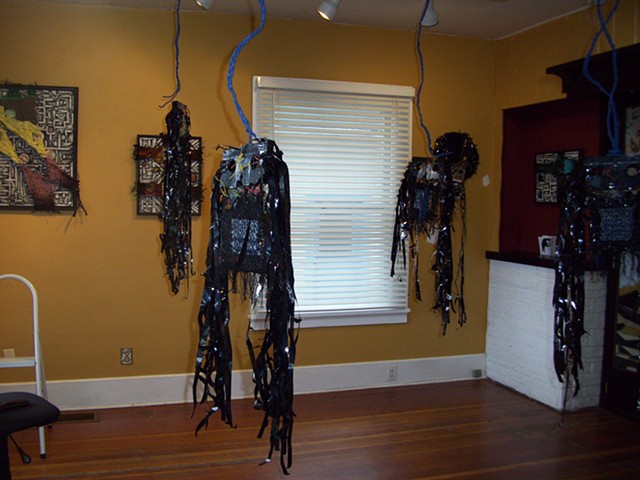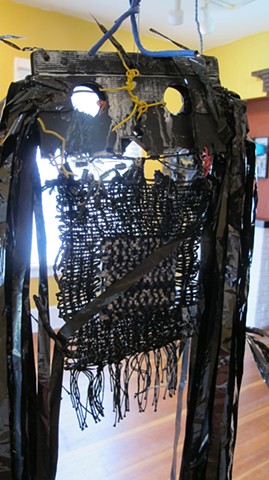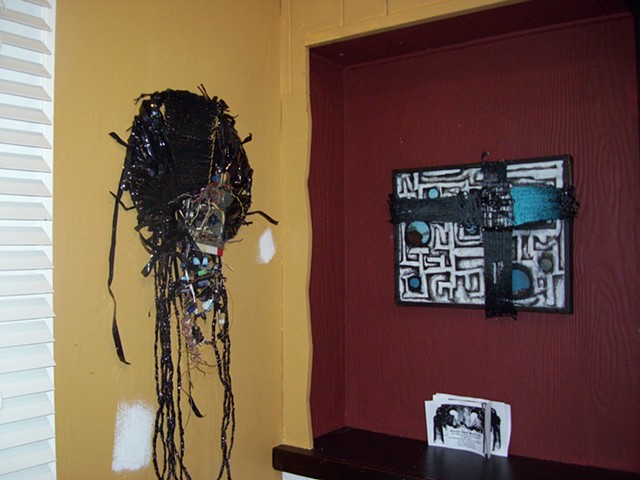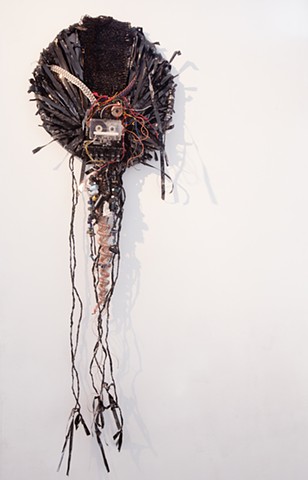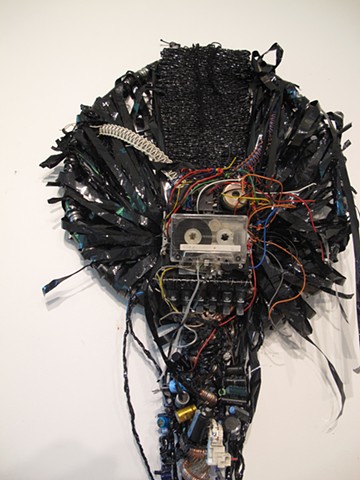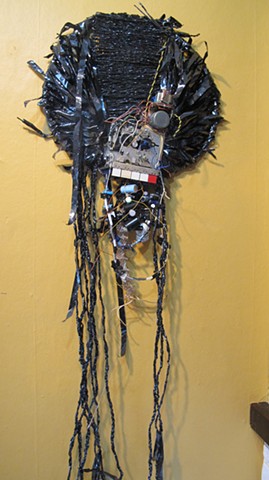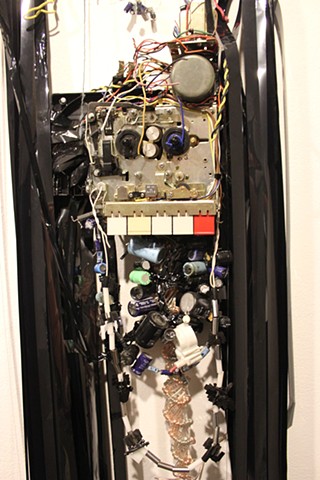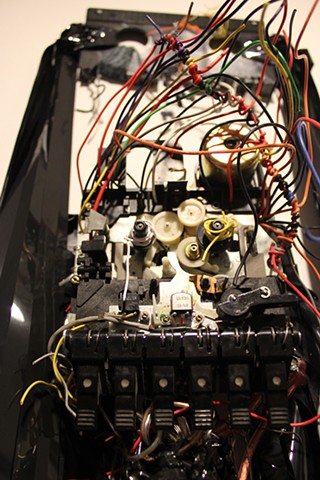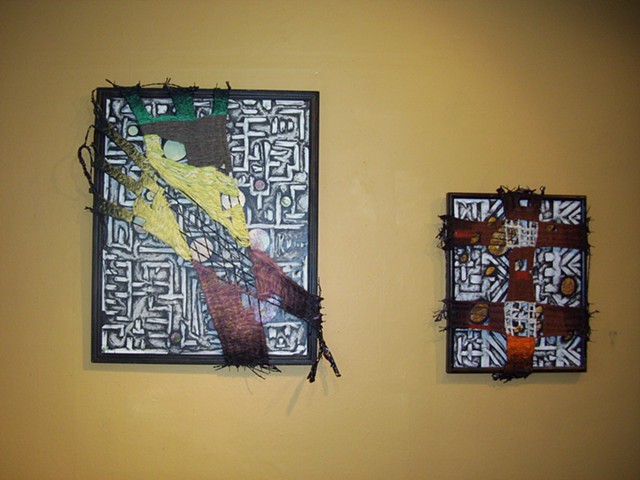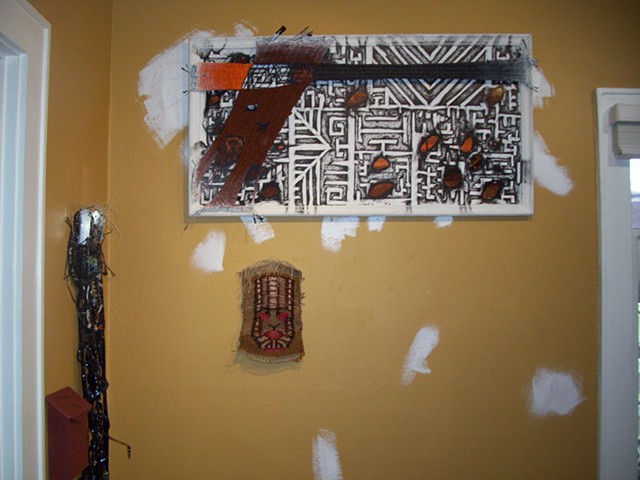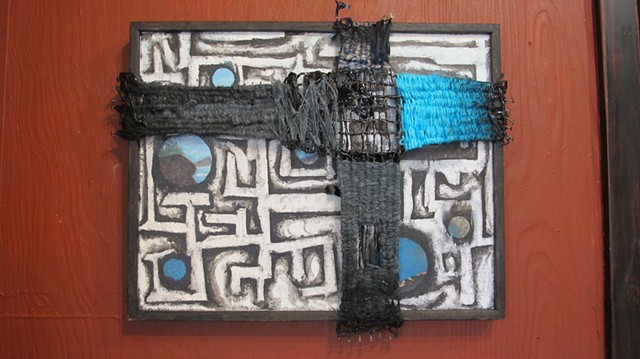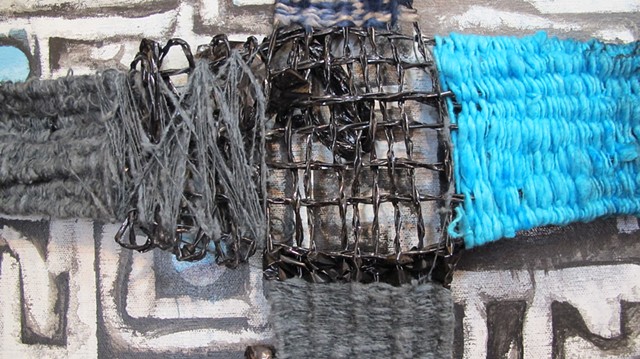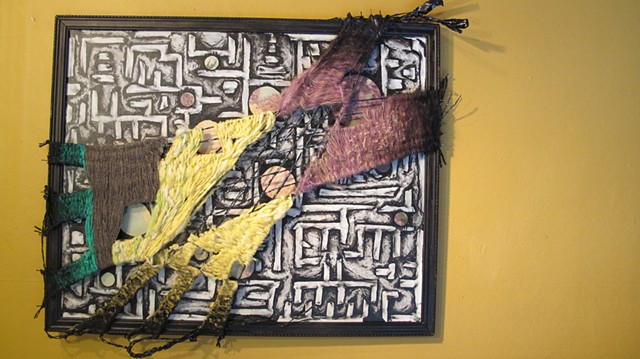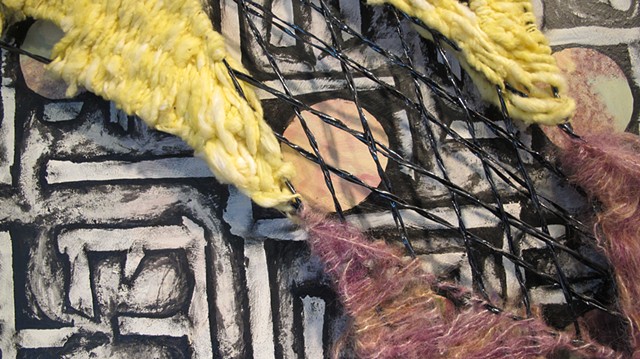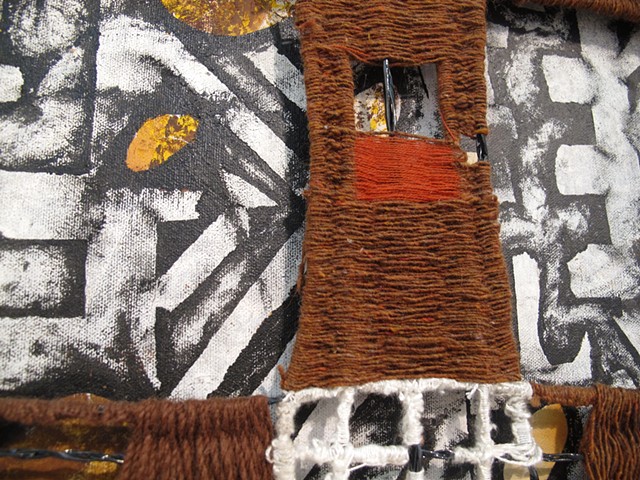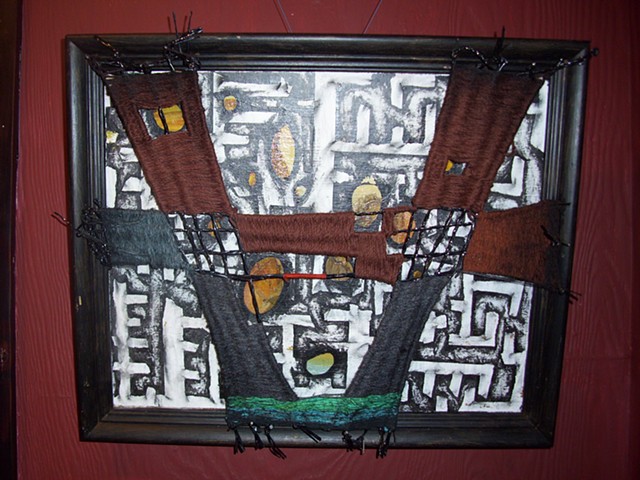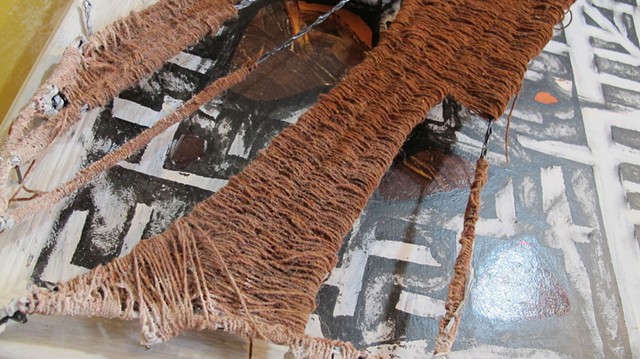Masks and Masking At Woodpecker Gallery in OR.
Mask (N.)
1. An object used to veil or hide a person’s identity
2. A protective cover worn over the face
3. FIGURATIVE a disguise or pretense
4. ELECTRONICS a patterned metal film used in the manufacture of microcircuits to allow selective modification of the underlying material
5. Psychology . obscuring, partially or completely, one sensory process by another, as the dulling of the sense of taste by smoking
Masking (V.)
1. To disguise or conceal; hide; dissemble
2. To cover or shield a part of (a design, picture, etc.) in order to prevent reproduction or to protect the surface from the colors used, as in working with an airbrush or in painting.
What causes a fasincation with masks? What is afforded to an individual who can remain identitiless? Does a mask offer a sense of protection? Or does a mask offer its wear a free pass to do whatever they may?
The act of masking in art is well documented as a contemporary art form and in many cases has been used in collage, and bricolage extensively. Masking is often used to create layers of images and visual information. In a sense, the layers created throught the use of masking could be considered sediment, revealing a multitude of histories within an art object.
In this work, I utilize this technique to develop a dense collection of material history. I combine techniques of masking with that of appropriation to construct a my visual vocabulary. These techniques are akin to the technique of the remix. The covering and rearranging of imagery and material present new forms of history.
Outside of the formal strategies I employ as my primary aesthetics, I am influenced by images of religious artifacts and paintings as well as the architecture of religious or monumental ruins. Such objects like the Russian icons, Mexican sugar skulls, Andean Khipu, Mayan temple stone carvings, and various ancient textiles.
Since my arrival to the Pacific Northwest, I advanced my skills with Fibers techniques specifically in weaving. My focus has been on the ancient and spiritual aspects of these techniques due to their traditional applications in domestic and non-western High Art. Techniques such as macramé, knitting, weaving, and beading have pre-historical origins that in many cases were tied to sacred rituals. This is precisely why I’ve chosen to work within this language; the understanding of skilled and material history highlights an aspect of ritual function in my work.
